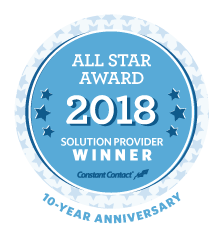
How do you find what you’re looking for online? Would you type into Google, “floral plants with petals” or “florists near me?”
Language is important. With our florist example, the “right” language is obvious, but more often than not it isn’t that clear cut. The closer you are to a business, the harder it is to look at it from an outsider’s perspective.
What is a Keyword? And What is Keyword Research?
“Florists near me” is example of a keyword, something you would type into Google (or, increasingly, speak into your phone) to find what it is you’re looking for. As a business on the other side of the equation you have to tap into that consumer mindset to find the right keywords to use in Search Engine Optimization (SEO).
Simply put, SEO is a way of “speaking Google’s language” to make sure that your website is best positioned to rank highly in those search results. It involves using keywords, coding and formatting to optimize your website. It’s vital for search engines and user experience – check out some of our many, many blogs talking about SEO and how it works.
Keyword research is a mix of database research, anthropological study, statistics and psychology. It’s matching what you know about your business with what people search for online.
How Do I Research Keywords?
Step 1: Start Broad
You’ll want to start off your keyword research by starting basic. Think about your business and the 5 – 10 generic keywords that describe your business. For example, for BizzyWeb that would be:
- Digital Marketing
- Web Design
- Email Marketing
- Social Media Marketing
- SEO
These will be the high-level keywords you’ll want to use. HubSpot marketing describes these keywords as a “bucket” that will house other, more specific keywords.
Step 2: Get Specific
Once you have your high-level “bucket” words, it’s time to start filling the bucket. Start with each category and think about what related keywords people may be searching. Try to think of a mix of some longer keywords and shorter keywords. If you’re having trouble thinking of related keywords, you can skip to step 3 to help you find a place to start.
For example, let’s take “web design” and break that down into some more specific keywords:
- User experience web design
- Web design Minneapolis
- Web design company
- WordPress web design
At this stage, it’s ok to have more keywords than you’ll end up targeting. Step 3 will help you zone in on your most valuable keywords.
Step 3: Use Tools to Get Even More Specific
While you’re thinking of keywords in step 2, there are a few tools that can help you. First, there’s Google Trends. This tool will not only show you how many people search for a keyword, but it will also suggest related keywords. This can be very helpful when you’re trying to think of specific keywords in Step 2.
When you’ve gathered a sizable list of possible keywords, it’s time to dig into Google’s Keyword Planner. This tool will show you how much traffic each keyword receives each month, how much it will cost if you want to advertise using that keyword, as well as a rough idea how competitive the keyword is. This can help you decide which short tail and long tail keywords you want to pursue for the best chance of increasing your rankings. Additionally, it will show you what you’re currently ranking for. You may be surprised to learn it’s not what you thought.
Now that you have your keywords in hand, it’s time to go forth and SEO.
* * *
Find Out What To Do To Improve Your Rankings
Get your Free Buzz Report and use it to find out what needs to be changed on your website to improve your search engine rankings.
What you’ll get in this report:
- Speed, tag, description and image analysis
- Top keywords
- Social analysis
- Link analysis
- Domain analysis
- Tasks for your next steps
Need a new digital marketing or web design plan? We are a Minneapolis SEO, digital marketing, social media marketing, web design and HubSpot inbound marketing agency. We’re located just outside of Minneapolis. Stop on by and get started – and while you’re here, pick up a free honey stick (yes, we love our bee-related theme).
 Get Started
Get Started Support
Support Call us
Call us Email Us
Email Us



